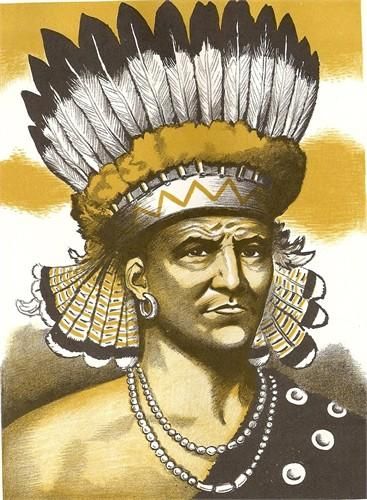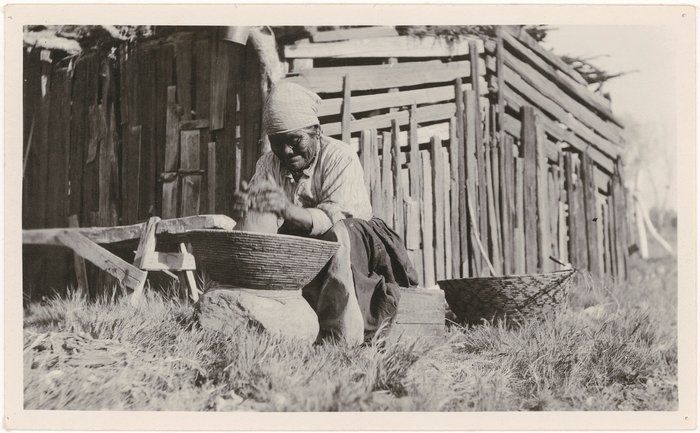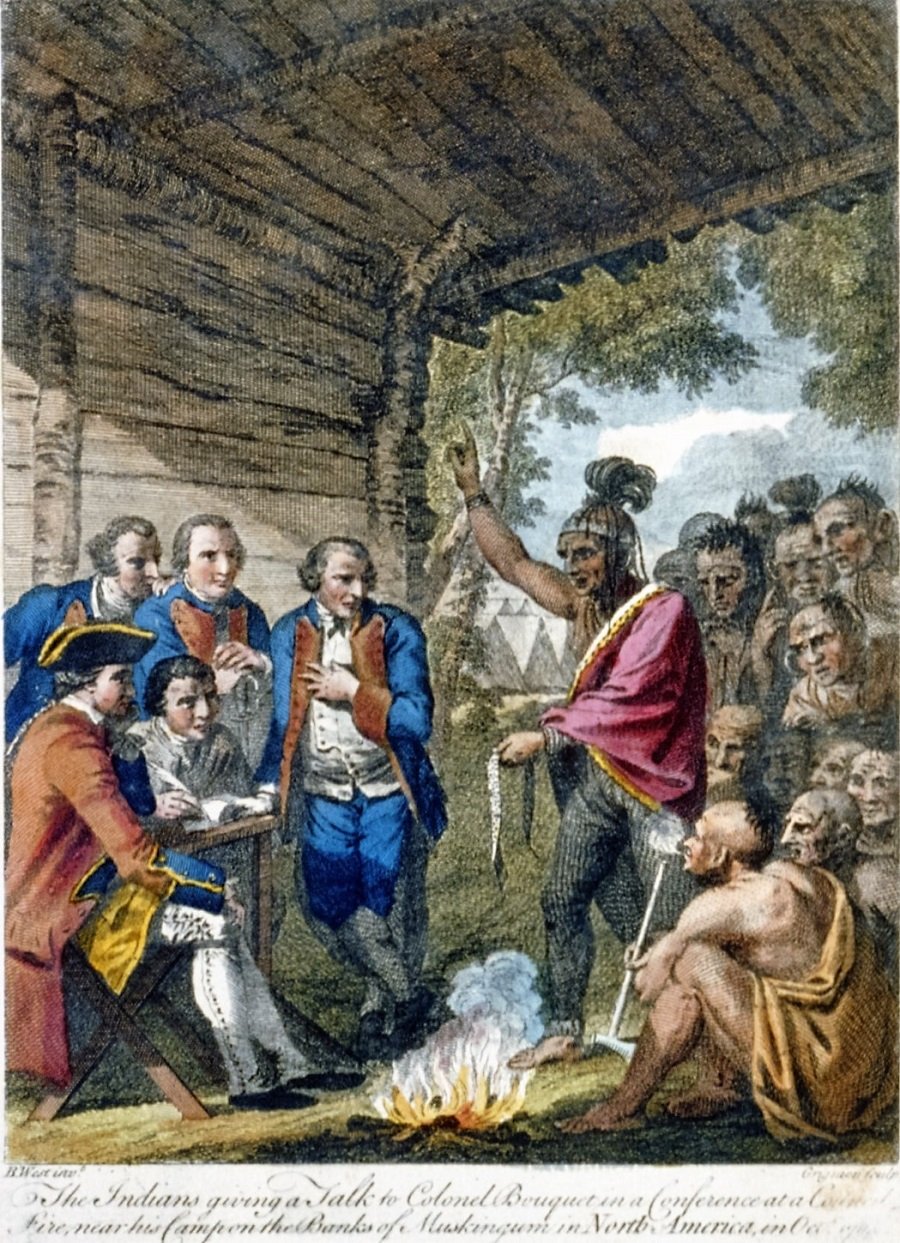The Hiawatha Asylum for Insane Indians
In the United States the concept of insanity has often been associated with notions of racial purity and the racial superiority of Europeans. In 1898, Congress was considering establishing a facility for insane Indians. One senator testified:
“It has been well established that the percentage of insanity is greater among half-breeds than among full-blooded Indians. That is explained by the theory of crossbreeding, that has a tendency to weaken the race. For this reason it is confidently expected by those who have made a study of these conditions, that the rate of insanity will greatly increase as our civilization grows.”
The following year, Congress passed a bill which established the Canton (later renamed Hiawatha) Asylum for Insane Indians in South Dakota. The bill was primarily promoted by entrepreneurs and real estate developers in Canton who felt that a federal facility located in their town would bring prosperity and employment. Passage of the bill was opposed by the Department of the Interior and the St. Elizabeth Hospital for the Insane in Washington, D.C. Both argued that the needs of the Indians would be better served by expanding the existing Washington facility. Those supporting the measure argued that the needs of insane Indians were being ignored. They also stressed that insanity was greater among half-breeds than among full-bloods. They pointed to this as evidence that racial interbreeding weakens the race.
In 1901, construction began on the Hiawatha Asylum in the town of Canton, South Dakota. The asylum consisted of a three-story main building with four wings. Several barns were built behind the main building. A seven-foot-high fence surrounded the asylum to keep the patients in and the public out. The entry was through two steel gates with the words “Hiawatha Asylum for Insane Indians” set in wrought iron in an arch above them.

A surgery/hospital building was later added to the east of the main building. This housed TB patients as well as accommodating infirmary needs.
The first patients were admitted to the asylum on December 31, 1902. By the end of 1903 there were 16 patients in the asylum.
Administration of the new asylum was turned over to Oscar Gifford, the former mayor of Canton and the man responsible for bringing the asylum to the town. He had drafted the land deal for the asylum and thus the Indian Office deemed him worthy of running an insane asylum even though he had neither medical knowledge nor any knowledge of mental illness.
The staff was poorly trained and, in fact, many were not trained at all. Controlling the patients involved kicking, striking, shaking, and/or choking. Treatment involved housekeeping and yard work. Patients were generally kept highly drugged. There were generally one or two employees for an entire ward which might have 20 to 30 patients. Up until the last few years of its operation, the asylum did not hire any actual nurses, but relied on local labor to work as attendants.
Working in conjunction with the local Chamber of Commerce, the Asylum was opened to the public on certain days so that medical professionals and the general public could come and view the “ill” Indians. Advertising to attract tourists to come and see “the crazy Indians” was run as far away as Minneapolis. Showcasing the Indians in a cleaned up area was a popular money-maker for local merchants and for hospital staff.
The patients lived without plumbing or electricity as the hospital administrator would not allow it. In other words, the building actually had plumbing and electricity, but these were not available in the patient wings. Rooms which were supposed to have been bathrooms were often used as storage rooms. With no plumbing, patients had to use chamberpots for urination and defecation. These chamberpots were often full and were emptied only irregularly.
Windows at the asylum were sealed shut to prevent the patients from escaping. Therefore, there was little fresh air in the rooms and the smell from the full chamberpots was difficult to tolerate.
In 1926 an investigation of the asylum found that the staff was grossly uneducated and not equipped to work with mentally ill patients. There was little or no documentation of patient intake, their ongoing treatment, or their progress. The findings of this investigation were incorporated into the 1928 Meriam Report.
Patients were poorly clothed and the 1926 investigation found some would lay in their own feces much of the time. At times patients would be gagged and then locked in a room. Some were handcuffed to their beds or to radiators.
The first patient death was in 1903 and as a result a cemetery was established far to the east of the hospital. It was situated on top of a hill, out of sight of the hospital buildings.
Several babies were born at the asylum-the records are not clear as to how many, nor is there any indication of how many pregnancies were caused by rape. Most of those born in the asylum died there.
The Commissioner of Indian Affairs authorized all admissions to the asylum. In most cases, the Indian agent on the reservation would make a recommendation to the Commissioner and if a bed was available, the Indian would be admitted. At times, some Indians, including children, were admitted simply because they were troublemakers and therefore deemed to be insane.
In 1933, the New York Times ran a story with the banner headline: “Sane Indians Held in Dakota Asylum: Patients Kept Shackled.” As a result there were some changes. Patients who had been shackled were taken out of handcuffs, but in some instances they had been shackled for so long that the keys had been lost. As a result of the bad publicity, the Commissioner of Indian Affairs hired new nurses, but the Asylum administrator refused to work with them and had them fired.
When John Collier was appointed as Commissioner of Indian Affairs, he was asked to investigate the case of a man kept at the asylum because of schizophrenia. Collier personally went to the asylum and found that the patient was not mentally ill. According to Collier:
“the institution was so outrageously cruel and injurious that we would deserve to be blown out of the water if we continued it.”
Collier fired the administrator and sent a doctor-someone who actually had medical credentials and experience in the mental health field-out to the asylum to determine who was actually mentally ill and who was not.
Unwilling to give up their asylum, the people of Canton fought hard to keep the institution open. The city managed to get a restraining order to prevent doctors from getting into the asylum.
In December 1933, 70 patients were transferred to St. Elizabeth’s in Washington, D.C. and 27 were deemed not insane and were returned to their reservations.
The asylum closed in 1934, having housed several hundred American Indians, many of whom never saw their homes again.




